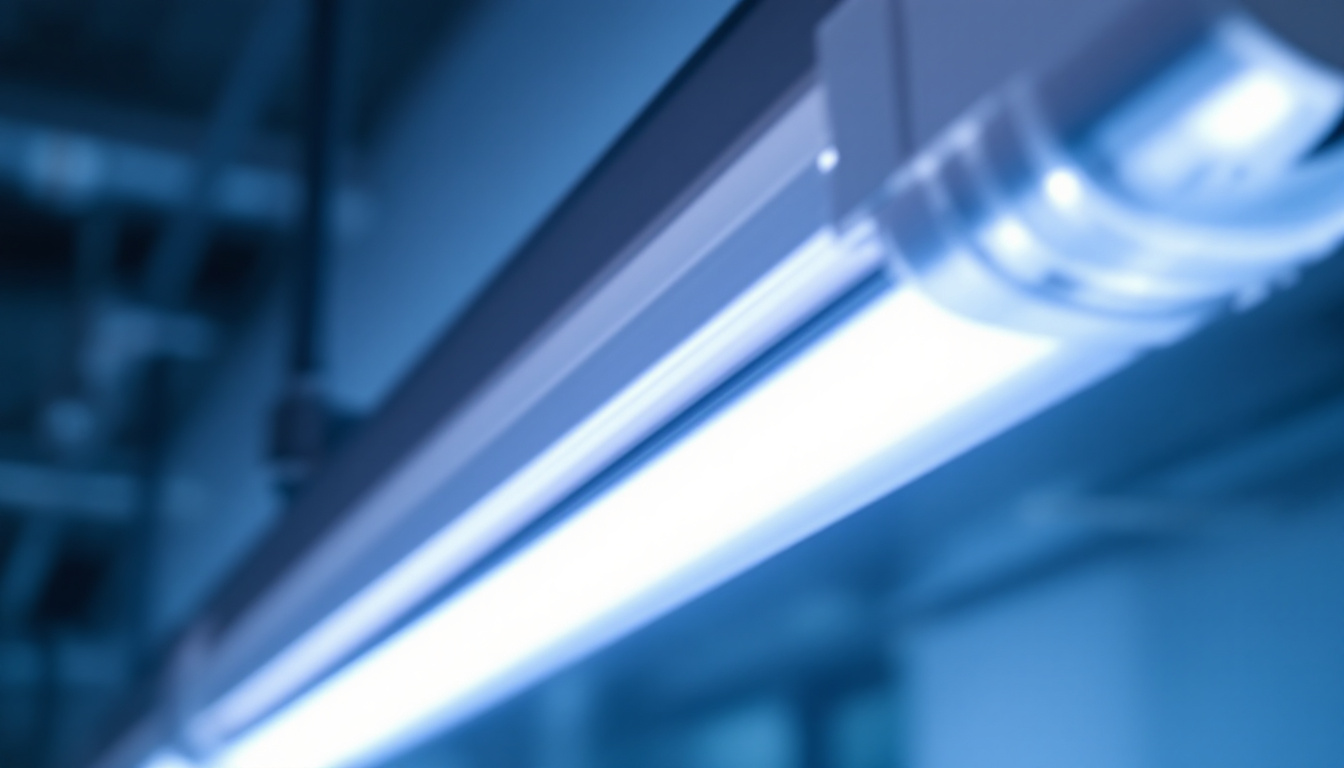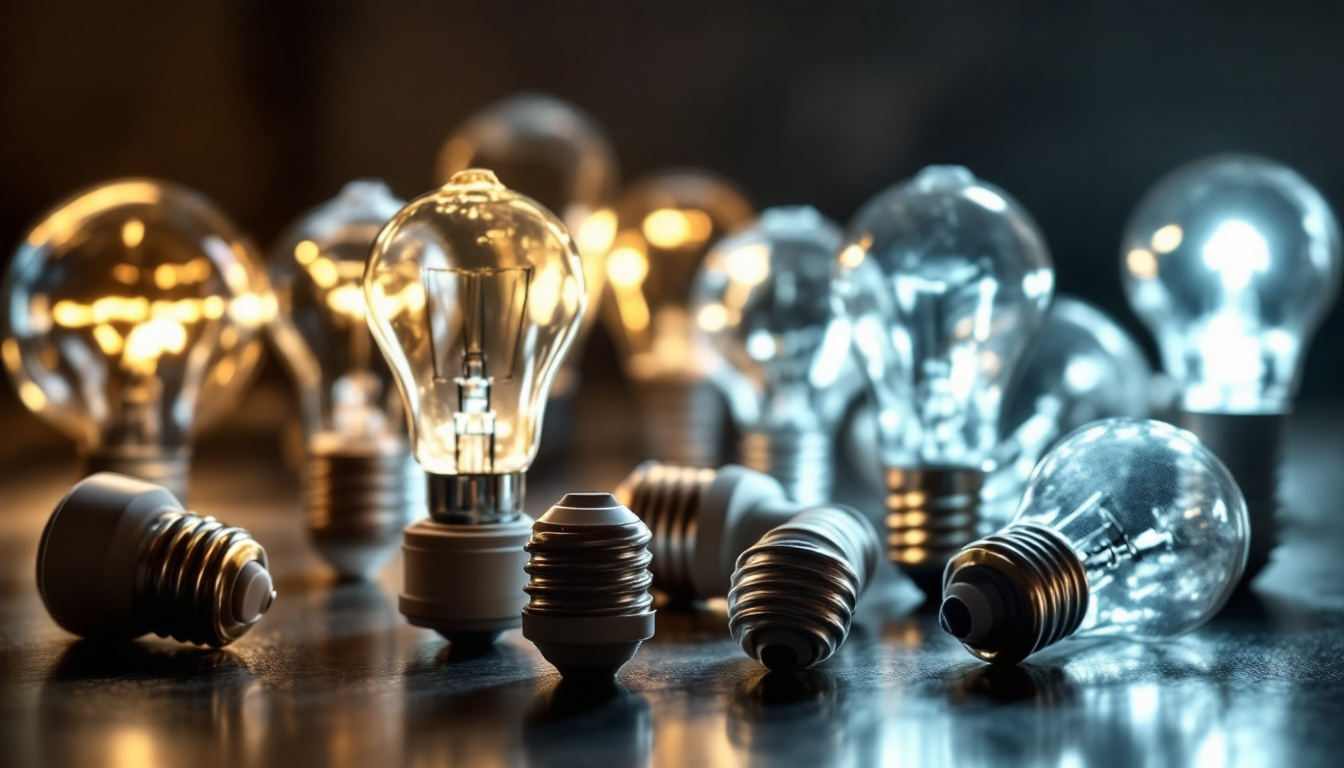
Fluorescent tube lights have long been a staple in commercial and industrial lighting applications. Their efficiency, longevity, and versatility make them a popular choice among lighting contractors. However, understanding the science behind how these lights work can enhance a contractor’s ability to recommend and install them effectively. This article delves into the principles of fluorescent lighting, its components, advantages, and considerations for installation.
Fluorescent lighting operates on a relatively simple principle: the conversion of electrical energy into visible light. This process involves several key components and steps that are essential for lighting contractors to grasp.
At the core of a fluorescent tube light is a gas-filled tube coated on the inside with phosphor. When an electric current passes through the gas, it excites the gas molecules, causing them to emit ultraviolet (UV) light. This UV light then interacts with the phosphor coating, which fluoresces and produces visible light.
The gas typically used in these tubes is a low-pressure mixture of argon and a small amount of mercury vapor. The mercury is crucial, as it generates the UV light necessary for the phosphor to emit visible light. This process is highly efficient, resulting in a significant amount of light output relative to the energy consumed. In fact, fluorescent lights are known to use about 75% less energy than traditional incandescent bulbs, making them a popular choice for both commercial and residential applications.
Understanding the various components of a fluorescent tube light is vital for lighting contractors. The primary components include:
Each of these components plays a critical role in the functionality of the fluorescent tube light. A thorough understanding of these parts can aid contractors in troubleshooting and installation. Additionally, the ballast can be either magnetic or electronic, with electronic ballasts offering advantages such as flicker-free operation and improved energy efficiency. This distinction is important for contractors to consider when selecting fixtures for specific applications, as it can affect both performance and longevity.
Moreover, the phosphor coating itself can vary, leading to different color temperatures and qualities of light output. This variability allows for a range of applications, from the cool white light often used in offices to the warmer tones preferred in residential settings. Understanding these nuances not only enhances the contractor’s ability to meet client needs but also contributes to creating optimal lighting environments that can improve productivity and mood in various spaces.
Fluorescent tube lights offer a variety of benefits that make them an attractive option for many lighting applications. These advantages can be pivotal in decision-making for contractors and their clients.
One of the most significant advantages of fluorescent lighting is its energy efficiency. Fluorescent tubes consume considerably less electricity compared to traditional incandescent bulbs, producing more lumens per watt. This efficiency not only reduces energy costs but also minimizes the environmental impact associated with energy consumption. Furthermore, the reduced energy demand can lead to lower greenhouse gas emissions, making fluorescent lighting a more sustainable choice for eco-conscious consumers and businesses alike.
Fluorescent tube lights have a longer lifespan compared to incandescent bulbs. While an incandescent bulb may last around 1,000 hours, a fluorescent tube can last anywhere from 7,000 to 15,000 hours, depending on usage and conditions. This longevity reduces the frequency of replacements, which can be particularly beneficial in commercial settings where maintenance costs are a concern. In addition, the extended lifespan of fluorescent tubes means less waste in landfills, contributing to a more sustainable approach to lighting solutions. Their durability also makes them suitable for environments where frequent bulb changes would be disruptive, such as in schools, hospitals, and retail spaces.
Another compelling advantage of fluorescent tube lighting is its versatility. These lights are available in a wide range of sizes, color temperatures, and brightness levels, allowing for customized lighting solutions that can meet the specific needs of various spaces. Whether it’s for a warm, inviting atmosphere in a restaurant or bright, clinical lighting in a laboratory, fluorescent tubes can be tailored to fit the desired ambiance. Additionally, they can be easily integrated into existing fixtures or used in new installations, making them a flexible choice for both residential and commercial applications.
Fluorescent tubes also generate significantly less heat compared to incandescent bulbs, which convert a large portion of their energy into heat rather than light. This characteristic is particularly advantageous in settings where temperature control is crucial, such as in offices or retail spaces, where excessive heat can lead to discomfort for occupants or affect temperature-sensitive goods. The lower heat output can also contribute to reduced cooling costs in warmer climates, further enhancing the overall energy efficiency of fluorescent lighting systems.
While fluorescent tube lights are relatively straightforward to install, there are several considerations that lighting contractors should keep in mind to ensure optimal performance and safety.
The ballast is a crucial component in the operation of fluorescent lights. It regulates the current and provides the necessary voltage to start the lamp. Contractors must choose the appropriate ballast type, whether magnetic or electronic, based on the specific requirements of the installation. Electronic ballasts are generally more efficient and provide flicker-free operation, making them a preferred choice in many applications. Additionally, the compatibility of the ballast with the specific fluorescent tube type is paramount; mismatched components can lead to reduced performance and even premature failure of the lights. It’s also worth noting that some electronic ballasts offer features such as dimming capabilities, which can enhance energy savings and extend the life of the tubes by reducing their operating hours when full brightness is not needed.
Fluorescent tubes come in various lengths and diameters, and selecting the right size is essential for proper installation. The most common sizes include T8 and T12 tubes, with T8 being the more energy-efficient option. Contractors should assess the space and lighting requirements to determine the most suitable tube size. Furthermore, the choice of size can also affect the overall aesthetic of the installation; for instance, longer tubes can provide a more uniform light distribution in larger areas, while smaller tubes may be more appropriate for compact or specialized spaces. It’s also important to consider the fixture design, as some fixtures are specifically engineered to accommodate certain tube sizes, ensuring optimal light output and minimizing glare, which can enhance the comfort of the environment being illuminated.
Fluorescent tube lights are versatile and can be used in a wide range of applications. Understanding these applications can help contractors provide better recommendations to their clients.
Fluorescent lighting is widely used in commercial environments such as offices, retail stores, and warehouses. The bright, even illumination provided by fluorescent tubes enhances visibility and productivity, making them an ideal choice for these settings.
In industrial settings, fluorescent tube lights are often used in manufacturing facilities, garages, and workshops. Their durability and long lifespan make them suitable for environments where lighting fixtures may be subject to wear and tear. Additionally, their energy efficiency contributes to lower operational costs in large facilities.
Despite their many advantages, fluorescent tube lights are not without challenges. Awareness of these limitations can help contractors address potential issues proactively.
Fluorescent lights can be sensitive to temperature fluctuations. In extremely cold environments, they may take longer to reach full brightness, while high temperatures can shorten their lifespan. Contractors should consider the operating environment when recommending fluorescent lighting solutions.
While fluorescent lights provide good illumination, their Color Rendering Index (CRI) can vary. The CRI measures how accurately a light source displays colors compared to natural light. Some fluorescent tubes may have a lower CRI, which can affect the appearance of colors in certain applications. For environments where color accuracy is crucial, such as art studios or retail spaces, contractors may need to select high-CRI fluorescent options or consider alternative lighting solutions.
As technology continues to evolve, so does fluorescent lighting. Staying informed about advancements can provide contractors with valuable insights into the latest options available in the market.
Recent developments in fluorescent technology have led to the creation of high-performance tubes that offer improved efficiency and light output. These tubes often utilize advanced phosphor coatings and better gas mixtures, resulting in brighter light and longer lifespans. Contractors should explore these options to provide clients with the best possible solutions.
With increasing awareness of environmental issues, the lighting industry has seen a shift towards more sustainable options. Fluorescent tubes are generally more eco-friendly than incandescent bulbs, but contractors should also consider the disposal of these lights, particularly due to the presence of mercury. Many regions have established recycling programs for fluorescent tubes, and contractors should encourage clients to participate in these initiatives to promote responsible disposal.
Fluorescent tube lights remain a popular choice for various lighting applications due to their efficiency, longevity, and versatility. By understanding the science behind these lights, their components, advantages, and potential challenges, lighting contractors can make informed decisions that benefit both their clients and the environment. As technology continues to advance, staying updated on the latest developments in fluorescent lighting will further enhance a contractor’s ability to provide effective lighting solutions.
In a field that is constantly evolving, knowledge is power. By mastering the intricacies of fluorescent tube lighting, contractors can ensure that they remain competitive and capable of meeting the diverse needs of their clients.
Ready to elevate your lighting game? Look no further than LumenWholesale for all your fluorescent tube light needs. Our commitment to quality and affordability ensures that you have access to the best spec-grade lighting products at wholesale prices. Say goodbye to inflated markups and hello to a vast selection of reliable, high-performance lighting that meets the highest industry standards. Plus, with free shipping on bulk orders, you can stock up on premium lighting solutions without worrying about hidden fees. Don’t compromise on quality or cost—choose LumenWholesale for the perfect blend of efficiency, longevity, and value. Wholesale Lighting at the Best Value is just a click away.

Discover the frequent pitfalls lighting contractors encounter with solar lamp post installations.

Discover how Keystone LED lights are transforming the landscape for lighting contractors.

Discover the various types of light bulb sockets and their top benefits for lighting contractors.

Explore the top challenges lighting contractors face with outdoor motion sensors, from installation hurdles to environmental impacts, and discover expert solutions to enhance performance and reliability..